Hans Journal of Medicinal Chemistry
Vol.
11
No.
02
(
2023
), Article ID:
66258
,
11
pages
10.12677/HJMCe.2023.112015
组蛋白去乙酰化酶抑制剂的研究进展
汤玉姜,周庆发*
中国药科大学理学院,江苏 南京
收稿日期:2023年4月17日;录用日期:2023年4月24日;发布日期:2023年5月31日

摘要
组蛋白去乙酰化酶于上世纪90年代发现,其在氨基酸侧链的翻译后修饰起到重要作用,并且广泛在肿瘤细胞中高度表达。因此,研究开发新型的组蛋白去乙酰化酶抑制剂可以有效靶向针对肿瘤细胞。30多年来,人们对组蛋白去乙酰化酶的认识愈加清晰,并在这些认识的基础上创造了许多针对不同癌症的小分子药物。本文综述了目前临床上对组蛋白去乙酰化酶抑制剂的研究,并分类介绍其研究进展,希望能对后续组蛋白去乙酰化酶的抑制剂开发有所帮助。
关键词
组蛋白去乙酰化酶,临床进展,癌症

Research Progress on Histone Deacetylase Inhibitors
Yujiang Tang, Qingfa Zhou*
School of Sciences, China Pharmaceutical University, Nanjing Jiangsu
Received: Apr. 17th, 2023; accepted: Apr. 24th, 2023; published: May 31st, 2023

ABSTRACT
Histone deacetylase was discovered in the 90s of last century which plays an important role in the post-translational modification of side chains, and was widely expressed in tumor cells. Therefore, researching and developing novel histone deacetylase inhibitors can effectively target tumor cells. Over the past 30 years, people’s understanding of histone deacetylase had become increasingly clear, and many small molecule drugs for different cancers was created on the basis of these understandings. This article reviews the current clinical research on histone deacetylase inhibitors and categorizes their progress, hoping to be helpful for the subsequent development of histone deacetylase inhibitors.
Keywords:Histone Deacetylase, Clinical Research, Cancer

Copyright © 2023 by author(s) and Hans Publishers Inc.
This work is licensed under the Creative Commons Attribution International License (CC BY 4.0).
http://creativecommons.org/licenses/by/4.0/


1. 引言
人类基因组包含20,000至25,000个基因,仅由其DNA序列的5%编码。然而,并非是一个基因对应着一个蛋白质,因为信使核糖核酸在编辑等过程后会导致转录组比基因数量高出数倍。在蛋白质合成后,通过氨基酸侧链的翻译后修饰(post-translational modification, PTM)发生进一步的扩增。大多数PTM本质上是动态的,使单个蛋白质能够以多种功能状态存在,并以可逆的方式从一种状态移动到另一种状态。其中,特别是赖氨酸的ε-氨基侧链,通过烷基化或酰化等多种PTM产生各种修饰后的蛋白质 [1] [2] 。例如,烷基化增加了赖氨酸侧链的长度,同时在生理pH下保持其带正电的性质,而酰化则会产生中性甚至带负电荷的侧链,其范围从甲酰化中单个碳的添加到蛋白质如泛素的结合。其中,乙酰化和甲基化,发生在富含赖氨酸的组蛋白N末端,在染色质结构的表观遗传调控和基因转录过程中配体的募集中发挥核心作用。因此,参与到赖氨酸乙酰化、甲基化以及去除乙酰或甲基化的酶已成为小分子药物发现的重要靶点 [3] 。赖氨酸乙酰化在20世纪60年代初首次在组蛋白中观察到,其可以显著地改变蛋白质的生物学特性,例如改变蛋白结合、改变蛋白稳定性、降低相关酶的催化活性等。在此后不久,发现了催化乙酰化反应和脱乙酰化反应的酶,并将其分别命名为组蛋白乙酰转移酶(HATs)和组蛋白去乙酰化酶(histone deacetylases, HDACs)。
2. 人源HDACs的分类
在人体内,赖氨酸乙酰化的逆转是通过HDACs催化的酶促裂解来完成的。二HDACs被分为18个亚型,根据催化的机制不同又分为两个家族 [4] 。其中11种HDACs是依赖金属锌的酶,名为HDAC1-11,它利用水作为亲核试剂来水解酰胺键。其余7个Sirtuins1-7采用NAD作为辅助因子,将酰基转移到核糖核苷酸上C2的位置 [5] 。尽管这两个酶家族进行相同的赖氨酸去乙酰化反应,但术语HDAC通常仅表示锌依赖的11种酶。人组蛋白去乙酰化酶根据其序列同源性和细胞定位进一步细分为四类(表1)。
3. 天然产物中的HDAC抑制剂
天然产物曲古抑菌素A (Trichostatin A,1,图1)作为第一个有效的组蛋白去乙酰化抑制剂被发现已经过去了三十多年 [6] 。通过x晶体衍射的曲古他汀A-HDAC复合物图发现,羟肟酸作为双齿锌螯合剂,而二烯是一个刚性连接链位于通道中,二甲氨基苯作为帽子与HDAC表面的氨基酸残基结合。
Psammaplin A (2)是一种从海绵中分离出来的天然产物,它依靠二硫键形成一种对称的前药结构,二硫键断裂还原为硫醇成为活性分子,硫醇基团可以与锌离子单齿状螯合 [7] 。由于硫醇通常具有较差的生物利用度,硫醚样结构保护分子使其在代谢激活之前确保了更高的稳定性和细胞透过性。同样以硫醚结构作为前药的HDACs天然抑制剂还有细菌代谢产物罗米地辛(romidepsin, 3)以及spiruchostatin A (4)。类似的,来源于蓝藻的largazole (5)是一种易水解的硫酯,相比于曲古他汀A,罗米地辛以及largazole因为具有更大的帽子结构,具有更好的结合力以及亚型选择性 [8] 。Azumamide E (6)是仅有的羧酸类HDAC抑制剂,然而尽管羧酸可以成功的与锌离子螯合,但人工合成的羧酸类HDACs抑制剂往往效果不佳,而用羟肟酸基团替代羧酸的合成类似物往往具有更强的效果 [9] 。最后是trapoxin A (7),然而酮作为一种与金属离子相对弱结合的化合物类型,在人工合成HDACs抑制剂时往往较少考虑。
Table 1. Classification of isoform and common features of HDACs
表1. HDACs亚型分类以及常见特征
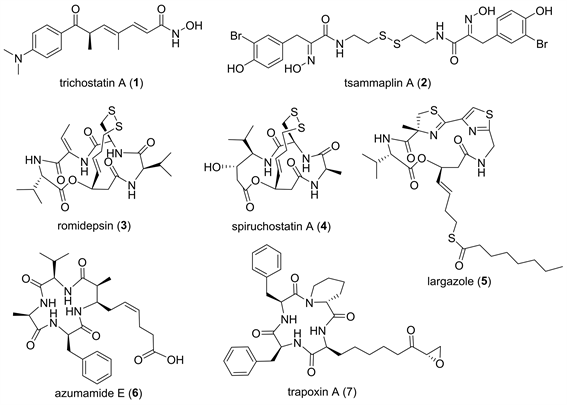
Figure 1. Natural product HDAC inhibitors
图1. 天然产物中的HDACs抑制剂
4. 临床候选以及通过临床试验的HDACs抑制剂
4.1. 常见HDACs抑制剂的分类
4.1.1. 脂肪族羟肟酸HDACs抑制剂
脂肪族羟肟酸HDACs抑制剂作为一种最为常见的HDACs抑制剂,具有较好的药物活性,进入临床的药物种类也是最多的。其中,最为经典的当属默克公司引导上市的伏立诺他 (vorinostat,8,图2)。其由常用的溶剂二甲基亚砜一步步优化得来,于2006年成为第一个获得FDA批准用于治疗皮肤T细胞淋巴瘤的HDACs抑制剂 [26] 。在此之后,出现了tefinostat (9) [27] ,CG200745 (10) [28] ,ricolinostat (11) [29] ,citarinostat (12) [30] ,CUDC-101 (13) [31] ,以及tinostamustine (14) [32] 六种脂肪族羟肟酸HDACs抑制剂。
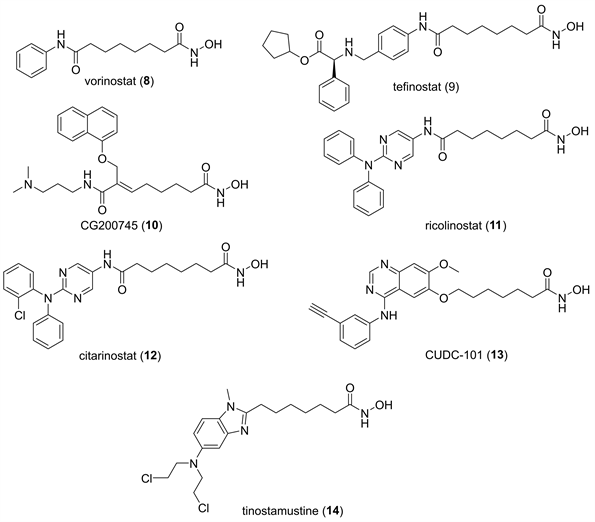
Figure 2. HDACs inhibitors of aliphatic hydroxamic acids in clinical candidate
图2. 脂肪族羟肟酸类临床候选HDACs抑制剂
4.1.2. 烯基羟肟酸类HDACs抑制剂
烯基羟肟酸类HDACs抑制剂的灵感来源于上文提到的曲古抑菌素A (Trichostatin A,1,图1),他们的特征是在羟肟酸集团前相连一个刚性的烯基。在2014年,继伏立诺他和罗米地辛之后,贝利司他(belinostat,15,图3)成为第三个上市的HDACs抑制剂,用于伏立诺他和罗米地辛治疗后的T细胞淋巴瘤 [33] 。而同类型的panobinostat (16)在一年后成功通过FDA认证,且适应症为复发或难治性多发性骨髓瘤 [34] 。而pracinostat (17)于2016年获美国FDA授予突破性疗法认定,同样于2018年获EMA审批孤儿药资格,并已进入三期临床试验治疗无法接受诱导化疗的成年急性骨髓性白血病(acute myeloid leukemia, AML) [35] 。
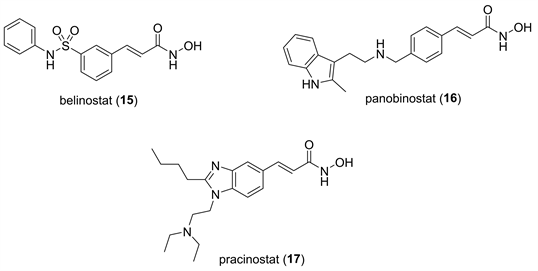
Figure 3. HDACs inhibitors of alkylhydroxamic acids in clinical candidate
图3. 烯基羟肟酸类临床候选HDACs抑制剂
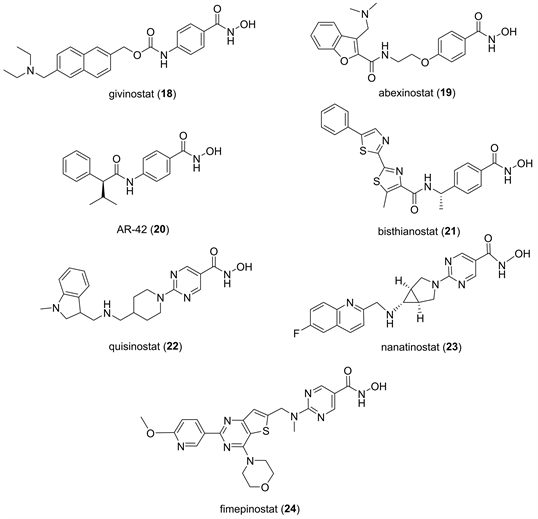
Figure 4. HDACs inhibitors of benzamide hydroxamic acids in clinical candidate
图4. 苯甲酰胺羟肟酸类临床候选HDACs抑制剂
4.1.3. 苯甲酰胺羟肟酸类HDACs抑制剂
由于苯环的存在,该类HDACs抑制剂具有比烯基羟肟酸刚性更强的连接链,目前存在的苯甲酰胺羟肟酸类HDACs抑制剂有:givinostat (18,图4) [36] 、abexinostat (19) [37] 、AR-42 (20) [38] 、bisthianostat (21) [39] 。由于结构的性质,此类HDACs抑制剂往往不具备对HDACs亚型的选择性。虽然并没有此类HDACs抑制剂经过完整的临床试验,但在其中givinostat已经基本完成了适应症为肌无力的Ⅲ期临床试验 [36] 。另外,abexinostat虽然不具有对HDACs亚型的强效选择性,但其泛抑制HDAC的同时也能保证其良好的安全性,同时具有口服有效的优点,已在美国、中国、欧洲等地同时开展临床试验,主要适应症包括血液肿瘤、肾癌、肉瘤、甲状腺癌、乳腺癌、卵巢癌等。类似的可以将苯环替换成各种芳香环,得到极性更强的化合物,如:quisinostat (22) [40] 、nanatinostat (23) [41] 、fimepinostat (24) [42] 。
4.1.4. 邻氨基苯胺类HDACs抑制剂
除了羟肟酸作为锌离子作用基团的HDACs抑制剂,邻氨基苯胺同样是一种效果极佳的锌离子螯合基团。该类化合物是由于发现抗惊厥药地西林(Desicillin)具有抑制细胞生长的作用,而进一步对地西林进行修饰后,发现乙酰化的地西林即tacedinalin (25,图5) [43] 不仅具有抗肿瘤活性,且在具备低毒性的同时有更好的代谢稳定性。而在复杂化帽子基团之后就得到ntinostat (26) [44] 以及mocetinostat (27) [45] 两种化合物。而值得一提的是,tucidinostat (28)是首个完全在中国境内完成全部发现制造过程的药物,并于2015年通过CFDA批准上市用于治疗复发或难治性外周T细胞淋巴瘤 [46] 。目前也仍有许多氨基苯胺类HDACs抑制剂药物处于临床试验阶段,如:domatinostat (29) [47] 和CXD101 (30) [48] 。
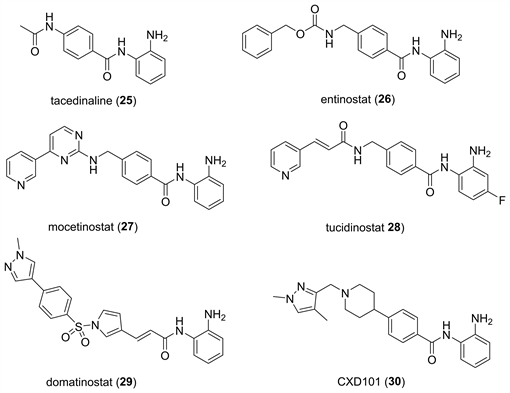
Figure 5. HDACs inhibitors of o-aminoaniline in clinical candidate
图5. 邻氨基苯胺类临床候选HDACs抑制剂
已批准的药物和大多数临床候选药物都有针对单个HDAC亚型的药效学数据,将其整理如下(见表2)。
Table 2. IC50 values for HDAC isoforms of clinical candidates and approved drugs [13] [14] [20] [21] [23] [24] [26] - [32]
表2. 临床候选和已批准药物的HDAC亚型的IC50值 [13] [14] [20] [21] [23] [24] [26] - [32]
5. 癌症治疗临床试验Ⅱ/Ⅲ期中的HDACs抑制剂
5.1. 单独用药疗法
在肿瘤治疗领域,我们正在努力地探索和进行HDACs抑制剂相关的单药Ⅱ/Ⅲ期临床试验。其中,panobinostat已经通过美国FDA以及EMA批准,适用于多发性骨髓瘤,并且目前正在研究将其作为异基因造血干细胞移植后可能产生的“移植物抗宿主病”的免疫调节剂 [49] 。而在国内外也在积极进行关于abexinostat的临床试验,作为一种强效的泛HDACs抑制剂,加上其出色的药代动力学性质,希望其可以在于西达苯胺完全不同的适应症上发挥更好的作用。与此同时,现有进入市场的泛HDACs抑制剂中极少有以实体瘤为适应症,但由于HDAC靶点的表观遗传学特性以及许多肿瘤细胞中的高表达,开发对实体瘤有效的HDACs抑制剂具有相当潜力,在表3中有所体现,像JBI-802、givinostat、tinostamustine等都致力于对实体瘤的适应症开发。同时我们能注意到HDACs的单药抑制对不同非实体瘤的研究仍未停止,HDACs仍是一个较好的针对非实体瘤的有效靶点。
Table 3. Examples of phase II/III trials conducted with HDAC inhibitors administered separately
表3. HDAC抑制剂单独用药进行的第Ⅱ/Ⅲ期试验的实例
5.2. 联合用药方法
HDACs作为与表观遗传学相关的靶点,在机制上有可能改变肿瘤细胞耐药性的发展,其在翻译后修饰过程中重编译从而响应联合用的药物,能有效改善部分药物易获得耐药性的特性,而许多临床试验已经研究了这一假设 [50] [51] 。表4中列举了部分与HDACs联用相关且近年来进入到临床Ⅱ期实验的例子,目前大多数都集中于与激酶或者是抗pd-1单抗联用,期望在人体内能证实存在的潜在协同作用,而HDACs抑制剂与细胞毒性药物的联合治疗尚未显示出显著的前景,这进一步支持了我们的结论,即泛HDACs抑制剂本身可以作为细胞毒性药物。令人振奋的是,在2019年NMPA批准西达苯胺联合芳香化酶抑制剂依西美坦治疗用于乳腺癌治疗,这是HDACs药物第一次被批准用于非血液瘤的适应症,证明HDAC的多药协同路线具有极大潜质。
Table 4. Examples of phase II/III trials conducted with HDAC inhibitor combination therapy
表4. HDAC抑制剂联合用药进行的第Ⅱ/Ⅲ期试验的实例
6. 结论与展望
经过30年的研究与创新,人们对于HDAC靶点的认识愈发深刻,数十种药物的临床研发为相应的患者特别是癌症患者提供更多的可能性。但在多药联用方面,我们仍未发掘出HDACs作为表观遗传学靶点的真正实用潜力。而未来10年内,表观遗传学靶点或许会成为药物化学小分子抑制剂领域不可或缺的重要组成部分。
文章引用
汤玉姜,周庆发. 组蛋白去乙酰化酶抑制剂的研究进展
Research Progress on Histone Deacetylase Inhibitors[J]. 药物化学, 2023, 11(02): 116-126. https://doi.org/10.12677/HJMCe.2023.112015
参考文献
- 1. Azevedo, C. and Saiardi A. (2016) Why Always Lysine? The Ongoing Tale of One of the Most Modified Amino Acids. Advances in Biological Regulation, 60, 144-150. https://doi.org/10.1016/j.jbior.2015.09.008
- 2. Xu, H., Zhou, J. and Lin, S. (2017) PLMD: An Updated Data Resource of Protein Lysine Modifications. Journal of Genetics and Ge-nomics, 44, 243-250. https://doi.org/10.1016/j.jgg.2017.03.007
- 3. Ganesan, A. (2018) Epigenetic Drug Discov-ery: A Success Story for Cofactor Interference. Philosophical Transactions of the Royal Society B: Biological Sciences, 373, Article ID: 20170069. https://doi.org/10.1098/rstb.2017.0069
- 4. Yoshida, M., Kudo, N. and Kosono, S. (2017) Chemical and Structural Biology of Protein Lysine Deacetylases. Proceedings of the Japan Academy, Series B, 93, 297-321. https://doi.org/10.2183/pjab.93.019
- 5. Jiang, Y., Liu, J. and Chen, D. (2017) Sirtuin Inhibition: Strate-gies, Inhibitors and Therapeutic Potential. Trends in Pharmacological Sciences, 38, 459-472. https://doi.org/10.1016/j.tips.2017.01.009
- 6. Yoshida, M., Kijima, M. and Akita, M. (1990) Potent and Specific Inhibition of Mammalian Histone Deacetylase both in Vivo and in Vitro by Trichostatina. Journal of Biological Chemistry, 265, 17174-17179. https://doi.org/10.1016/S0021-9258(17)44885-X
- 7. Ganesan, A. (2016) Romidepsin and the Zinc-Binding Thiol Family of Natural Product HDAC Inhibitors. In: Fischer, J. and Childers, W.E., Eds., Successful Drug Discovery, Wiley, Hoboken, 13-29. https://doi.org/10.1002/9783527800315.ch2
- 8. Jing, Q., Hu, X., Ma, Y., et al. (2019) Marine-Derived Natural Lead Compound Disulfide-Linked Dimer Psammaplin A: Biological Activity and Structural Modification. Marine Drugs, 17, Article 384. https://doi.org/10.3390/md17070384
- 9. Wen, S., Carey, K.L., Nakao, Y., Fusetani, N., Packham, G. and Gane-san, A. (2007) Total Synthesis of Azumamide A and Azumamide E, Evaluation as Histone Deacetylase Inhibitors and Design of a More Potent Analogue. Organic Letters, 9, 1105-1108. https://doi.org/10.1021/ol070046y
- 10. Wang, Y. and Wang, H. (2022) The Emerging Role of Histone Deacetylase 1 in Allergic Diseases. Frontiers in Immunology, 13, Article 1027403. https://doi.org/10.3389/fimmu.2022.1027403
- 11. Roizman, B. (2011) The Checkpoints of Viral Gene Expression in Productive and Latent Infection: The Role of the HDAC/CoREST/LSD1/REST Repressor Complex. Journal of Virology, 85, 7474-7482. https://doi.org/10.1128/JVI.00180-11
- 12. Zhang, H., Ji, L., Yang, Y., Zhang, X., Gang, Y. and Bai, L. (2020) The Role of HDACs and HDACi in Cartilage and Osteoarthritis. Frontiers in Cell and Developmental Biology, 8, Article 560117. https://doi.org/10.3389/fcell.2020.560117
- 13. Weïwer, M., Lewis, M.C., Wagner, F.F. and Holson, E.B. (2013) Therapeutic Potential of Isoform Selective HDAC Inhibitors for the Treatment of Schizophrenia. Future Medicinal Chemistry, 5, 1491-1508. https://doi.org/10.4155/fmc.13.141
- 14. Kim, J.Y., Cho, H., Yoo, J., et al. (2022) Pathological Role of HDAC8: Cancer and Beyond. Cells, 11, Article 3161. https://doi.org/10.3390/cells11193161
- 15. Fontana, A., Cursaro, I., Carullo, G., Gemma, S., Butini, S. and Cam-piani, G. (2022) A Therapeutic Perspective of HDAC8 in Different Diseases: An Overview of Selective Inhibitors. In-ternational Journal of Molecular Sciences, 23, Article 10014. https://doi.org/10.3390/ijms231710014
- 16. Wu, Y., Hou, F., Wang, X., Kong, Q., Han, X. and Bai, B. (2016) Aberrant Expression of Histone Deacetylases 4 in Cognitive Disorders: Molecular Mechanisms and a Potential Target. Frontiers in Molecular Neuroscience, 9, Article 00114. https://doi.org/10.3389/fnmol.2016.00114
- 17. Mielcarek, M., zielonka, D., Carnemolla, A., et al. (2015) HDAC4 as a Potential Therapeutic Target in Neurodegenerative Diseases: A Summary of Recent Achievements. Frontiers in Cel-lular Neuroscience, 9, Article 00042. https://doi.org/10.3389/fncel.2015.00042
- 18. Mathias, R.A., Guise, A.J. and Cristea, I.M. (2015) Post-Translational Modifications Regulate Class IIa Histone Deacetylase (HDAC) Function in Health and Disease. Mo-lecular & Cellular Proteomics, 14, 456-470. https://doi.org/10.1074/mcp.O114.046565
- 19. Wang, Y., Abrol, R., Mak, J.Y.W., et al. (2022) Histone Deacety-lase 7: A Signalling Hub Controlling Development, Inflammation, Metabolism and Disease. The FEBS Journal, Article ID: 16437. https://doi.org/10.1111/febs.16437
- 20. Hu, S., Cho, E.-H. and Lee, J.-Y. (2020) Histone Deacetylase 9: Its Role in the Pathogenesis of Diabetes and Other Chronic Diseases. Diabetes & Metabolism Journal, 44, 234-244. https://doi.org/10.4093/dmj.2019.0243
- 21. Seidel, C., Schnekenburger, M., Dicato, M. and Diederich, M. (2015) Histone Deacetylase 6 in Health and Disease. Epigenomics, 7, 103-118. https://doi.org/10.2217/epi.14.69
- 22. Pulya, S., Amin, S.A. and Adhikari, N. (2021) HDAC6 as Privileged Target in Drug Discovery: A Perspective. Pharmacological Research, 163, Article ID: 105274. https://doi.org/10.1016/j.phrs.2020.105274
- 23. Cheng, F., Zheng, B., Wang, J., et al. (2021) Histone Deacetylase 10, a Potential Epigenetic Target for therapy. Bioscience Reports, 41. https://doi.org/10.1042/BSR20210462
- 24. Liu, S.S., Wu, F. and Jin, Y.M. (2020) HDAC11: A Rising Star in Epigenetics. Biomedicine & Pharmacotherapy, 131, Article ID: 110607. https://doi.org/10.1016/j.biopha.2020.110607
- 25. Chen, H., Xie, C., Chen, Q. and Zhuang, S. (2022) HDAC11, an Emerging Therapeutic Target for Metabolic Disorders. Frontiers in Endocrinology, 13, Article 989305. https://doi.org/10.3389/fendo.2022.989305
- 26. Marks, P.A. and Breslow, R. (2007) Dimethyl Sulfoxide to Vori-nostat: Development of this Histone Deacetylase Inhibitor as an Anticancer Drug. Nature Biotechnology, 25, 84-90. https://doi.org/10.1038/nbt1272
- 27. Ossenkoppele, G.J., Lowenberg, B., Zachee, P., et al. (2013) A Phase I First-in-Human Study with Tefinostat—A Monocyte/Macrophage Targeted Histone Deacetylase Inhibitor—In Patients with Advanced Haematological Malignancies. British Journal of Haematology, 162, 191-201. https://doi.org/10.1111/bjh.12359
- 28. Jung, D.E., Park, S.B., Kim, K., Kim, C. and Song, S.Y. (2017) CG200745, an HDAC Inhibitor, Induces Anti-Tumour Effects in Cholangiocarcinoma Cell Lines via miRNAs Targeting the Hippo Pathway. Scientific Reports, 7, Article No. 10921. https://doi.org/10.1038/s41598-017-11094-3
- 29. Santo, L., Hideshima, T., Kung, A.L., et al. (2012) Preclinical Activity, Pharmacodynamic, and Pharmacokinetic Properties of a Se-lective HDAC6 Inhibitor, ACY-1215, in Combination with Bortezomib in Multiple Myeloma. Blood, 119, 2579-2589. https://doi.org/10.1182/blood-2011-10-387365
- 30. Huang, P., Almeciga-Pinto, I., Jarpe, M., et al. (2017) Selec-tive HDAC Inhibition by ACY-241 Enhances the Activity of Paclitaxel in Solid Tumor Models. Oncotarget, 8, 2694-2707. https://doi.org/10.18632/oncotarget.13738
- 31. Cai, X., Zhai, H.X., Wang, J., et al. (2010) Discovery of 7-(4-(3-Ethynylphenylamino)-7-Methoxyquinazolin- 6-Yloxy)-N-Hydroxyheptanamide (CUDC-101) as a Potent Multi-Acting HDAC, EGFR and HER2 Inhibitor for the Treatment of Cancer. Journal of Medicinal Chemistry, 53, 2000-2009. https://doi.org/10.1021/jm901453q
- 32. Mehrling, T. and Chen, Y. (2015) The Alkylating-HDAC In-hibition Fusion Principle: Taking Chemotherapy to the Next Level with the First in Class Molecule EDO-S101. An-ti-Cancer Agents in Medicinal Chemistry, 16, 20-28. https://doi.org/10.2174/1871520615666150518092027
- 33. Finn, P.W., Loza, E. and Carstensen, E. (2016) The Discovery and Development of Belinostat. In: Fischer, J. and Childers, W.E., Eds., Successful Drug Discovery, Wiley, Hoboken, 31-57. https://doi.org/10.1002/9783527800315.ch3
- 34. Atadja, P. and Perez, L. (2016) Discovery and Development of Farydak (NVP-LBH589, Panobinostat) as an Anticancer Drug. In: Fischer, J. and Childers, W.E., Eds., Successful Drug Discovery, Wiley, Hoboken, 59-88. https://doi.org/10.1002/9783527800315.ch4
- 35. Wang, H., Yu, N., Chen, D., et al. (2011) Discovery of (2E)-3-{2-Butyl-1-[2-(Diethylamino)Ethyl]-1H-Benzimidazol- 5-yl}-N-Hydroxyacrylamide (SB939), an Orally Active Histone Deacetylase Inhibitor with a Superior Preclinical Profile. Journal of Medicinal Chemistry, 54, 4694-4720. https://doi.org/10.1021/jm2003552
- 36. Matalon, S., Palmer, B.E., Nold, M.F., et al. (2010) The Histone Deacety-lase Inhibitor ITF2357 Decreases Surface CXCR4 and CCR5 Expression on CD4+ T-Cells and Monocytes and is Supe-rior to Valproic Acid for Latent HIV-1 Expression in Vitro. JAIDS: Journal of Acquired Immune Deficiency Syndromes, 54, 1-9. https://doi.org/10.1097/QAI.0b013e3181d3dca3
- 37. Buggy, J.J., Cao, Z.A., Bass, K.E., et al. (2006) CRA-024781: A Novel Synthetic Inhibitor of Histone Deacetylase Enzymes with Antitumor Activity in Vitro and in Vivo. Molecular Cancer Therapeutics, 5, 1309-1317. https://doi.org/10.1158/1535-7163.MCT-05-0442
- 38. Lu, Q., Wang, D.S., Chen, C.S., et al. (2005) Struc-ture-Based Optimization of Phenylbutyrate-Derived Histone Deacetylase Inhibitors. Journal of Medicinal Chemistry, 48, 5530-5535. https://doi.org/10.1021/jm0503749
- 39. Zhang, S.W., Gong, C.J., Su, M.B., et al. (2020) Synthesis and in Vitro and in Vivo Biological Evaluation of Tissue-Specific Bisthiazole Histone Deacetylase (HDAC) Inhibitors. Journal of Medicinal Chemistry, 63, 804-815. https://doi.org/10.1021/acs.jmedchem.9b01792
- 40. Arts, J., King, P., Marin, A., et al. (2009) JNJ-26481585, a Novel Second-Generation Oral Histone Deacetylase Inhibitor, Shows Broad-Spectrum Preclinical Antitumoral Activity. Clinical Cancer Research, 15, 6841-6851. https://doi.org/10.1158/1078-0432.CCR-09-0547
- 41. Moffat, D., Patel, S., Day, F., et al. (2010) Discovery of 2-(6-{[(6-Fluoroquinolin-2-yl)Methyl]Amino}Bicyclo[3.1.0]Hex- 3-yl)-N-Hydroxypyrimidine-5-Carboxamide (CHR-3996), a Class I Selective Orally Active Histone Deacetylase Inhibitor. Journal of Medicinal Chemistry, 53, 8663-8678. https://doi.org/10.1158/1078-0432.CCR-09-0547
- 42. Qian, C., Lai, C.J., Bao, R., et al. (2012) Cancer Network Disruption by a Single Molecule Inhibitor Targeting Both Histone Deacetylase Activity and Phosphatidylinosi-tol 3-Kinase Signaling. Clinical Cancer Research, 18, 4104-4113. https://doi.org/10.1158/1078-0432.CCR-12-0055
- 43. Moradei, O.M., Mallais, T.C., Frechette, S., et al. (2007) Novel Aminophenyl Benzamide-Type Histone Deacetylase Inhibitors with Enhanced Potency and Selectivity. Journal of Medicinal Chemistry, 50, 5543-5546. https://doi.org/10.1021/jm701079h
- 44. Khan, N., Jeffers, M., Kumar, S., et al. (2008) Determination of the Class and Isoform Selectivity of Small-Molecule Histone Deacetylase Inhibitors. Biochemical Journal, 409, 581-589. https://doi.org/10.1042/BJ20070779
- 45. Fournel, M., Bonfils, C., Hou, Y., et al. (2008) MGCD0103, a Novel Isotype-Selective Histone Deacetylase Inhibitor, has Broad Spectrum Antitumor Activity in Vitro and in Vivo. Molecular Cancer Therapeutics, 7, 759-768. https://doi.org/10.1158/1535-7163.MCT-07-2026
- 46. Lu, X., Ning, Z., Li, Z., Cao, H. and Wang, X. (2016) De-velopment of Chidamide for Peripheral T-Cell Lymphoma, the First Orphan Drug Approved in China. Intractable & Ra-re Diseases Research, 5, 185-191. https://doi.org/10.5582/irdr.2016.01024
- 47. Bretz, A.C., Parnitzke, U., Kronthaler, K., et al. (2019) Domatinostat Favors the Immunotherapy Response by Modulating the Tumor Immune Microenvironment (TIME). Journal for Immu-noTherapy of Cancer, 7, 294. https://doi.org/10.1186/s40425-019-0745-3
- 48. Eyre, T.A., Collins, G.P., Gupta, A., et al. (2019) A Phase 1 Study to Assess the Safety, Tolerability, and Pharmacokinetics of CXD101 in Patients with Advanced Cancer: Pharma-cokinetics of CXD101 in Patients with Advanced Cancer. Cancer, 125, 99-108. https://doi.org/10.1002/cncr.31791
- 49. Zhang, Q., Dai, Y., Cai, Z. and Mou, L. (2018) HDAC Inhibitors: Novel Immunosuppressants for Allo- and Xeno- Transplantation. ChemistrySelect, 3, 176-187. https://doi.org/10.1002/slct.201702295
- 50. Suraweera, A., O’Byrne, K.J. and Richard, D.J. (2018) Combination Therapy with Histone Deacetylase Inhibitors (HDACi) for the Treatment of Cancer: Achieving the Full Therapeutic Po-tential of HDACi. Frontiers in Oncology, 8, Article 92. https://doi.org/10.3389/fonc.2018.00092
- 51. Morel, D., Jeffery, D., Aspeslagh, S., Almouzni, G. and Postel-Vinay, S. (2020) Combining Epigenetic Drugs with Other Therapies for Solid Tumours—Past Lessons and Future Promise. Nature Reviews Clinical Oncology, 17, 91-107. https://doi.org/10.1038/s41571-019-0267-4
NOTES
*通讯作者。
